The slowest animals in the world are animals with an incredible slow top speed. Running is one of the ways animals protect themselves from predators.
Nonetheless, these slow-moving animals have other ways of defending themselves. Watching these animals' movements both in water and on land is absolutely intriguing.
In this article, you can explore their fascinating and unexpected features. Look at their pictures and see them in videos below. If you have wondered, what are the slowest animals on earth?
Here are the top 15 world’s slowest animals in 2025, you should see, they are,
- Banana Slugs
- Sea anemone
- Starfish
- Snail
- Greenland shark
- Coral
- Sea horse
- Slow Loris
- Three-Toed Sloth
- Manatee
- Giant Galapagos Tortoise
- Gila Monster
- American Woodcock
- Koala
- Sea Sponge
Check out these animals that are among the slowest things in the world, and lots of interesting details about them. Read on!
1. Banana Slugs - The Slowest Animal in the World
Similar to snails, they are also gastropods (stomach-foot animals). Banana slugs come in different colors; they can be yellow, brown, and green. If they are green they can easily be spotted on land.
They have an average weight of four ounces and they can be 10 inches long. They are extraordinarily slow that most banana slugs move at the speed of 6.5 inches per minute. The bigger banana slug moves at the speed of 6.5 inches in two hours.
While the speediest moves at the speed of 7.5 inches per minute. In fact, they love to be slow, to make their speed slower while descending trees, they will add more mucus plug from their tail.
No wonder they are among the slowest animals in the world in 2025. The mucus helps the slug to experience minimum exertion and maximum lubrication.
Due to their constant usage of mucus, they prefer a moist environment because water is necessary to produce slime. Apart from lubrication, they also use their slime to send messages or to communicate to other slugs.
We humans will see it as nothing; to slugs, it means a lot. They are hermaphrodites. They do experience both estivation and hibernation during harsh weather by burring themselves.
They are found in almost all parts of the world most especially in the damp forests of California to Alaska and to Sierras as they are numerous there. They feed on living, dead and decaying plants as well as animal droppings.
2. Sea Anemone
Sea anemones are large numerous flower-like invertebrate animals with no backbone. They are not plant, a sea anemone is a single polyp that is attached to its base.
They have a cylindrical body shape and a pedal disc (a foot). They are listed as the second among the slowest animals in the world in 2025.
There are about 100 species of this animal. Many of the sea anemones prefer to stay in one fixed place, others choose to move. The ones that choose to move travel in a slow creep along surfaces.
They move at the speed of 1 cm per hour (0.39 inches per hour) with the help of their feet’ suction. They travel in a similar manner to slugs but in water. While the ones that somersault or tumble move faster like the one shown in the video below.
And certain ones will detach themselves from what they are clinging to and then float and swim away through waters by gently squirming. They can be spot-on in an oceanic depth of 10,000 meters (about 33,000 feet).
Certain species can live up to 50 years. Each polyp has a mouth at the center surrounded by rings of tentacles. They are of different colors and shapes. They are free from certain predators because their tentacles are stinging and toxic to humans as well.
Yet, some codfish, eels, flounders, and certain starfishes feed on them. Their average size is 1.5-10 cm (0.6-4 inches) in length. Although they can catch fish and feed on them, they are still involved in symbiotic relationships with some particular fishes.
The symbiotic relationship involves the sea anemone eating the leftover foods by the fishes and then the fishes also find protection in the midst of anemone from their predators. They can reproduce both by sexual means and asexually by budding.
3. Starfish
 |
| Image credit: Mark Walz/Pexel |
They are animals, but they do not have blood or brain. They are beautiful animals that can weigh up to 11 pounds. They are very slow as they use their arms to move. They move at a speed of 0.06 miles per hour (0.1 kilometers per hour).
They usually have five arms but there are species that have more, like the sun star with 40 arms. They are not fish as they do not have fins, scales, and gills. Their tiny eyes can be spot on in some of their arms.
Sea star is more appropriate for their name as they related to sand dollars and sea urchins. There are about 2,000 sea star species and they come in a variety of colors, sizes, and shapes.
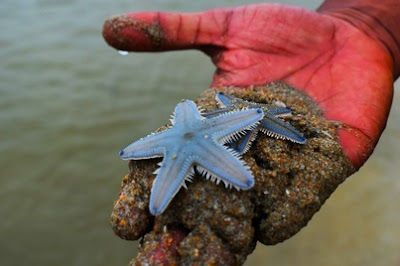 |
| Image credit: Ravi Shekhar/Unsplash |
They are found in the deepwater of the ocean, intertidal zone but they cannot survive in freshwater. They can reproduce sexually and asexually by regeneration. They have a unique way of eating up their prey.
When they capture their prey, they hold the prey through tiny suction cups after which their stomach comes out of their mouth to digest the prey, and then the stomach enters their body back again after eating.
They have strong upper skin made up of calcium carbonate, which protects them from predators.
4. Snail
Snails are known for their slow speed through their muscular foot. They are found everywhere around the earth, from deserts to deep ocean trenches. They belong to the mollusks species; they are the largest of the group.
There is a common quote that, "the snail sees the benefit, the beauty in every inch". They glide at the average top speed of 0.1km/h (0.028 meters per second or 0.09 feet per second). No wonder they are among the slowest animals in the world in 2025.
Yet, apart from their crawling speed, there are many fascinating facts about them. They are hermaphrodites. Some people believe that snail mucous can help in healing wounds. They believe the mucous helps skin cells to regenerate by triggering an immune response.
Depending on their habitat, some snails have lungs, some have gills while some even have both lungs and gills. There is one specie called the apple snail, it breathes through its siphon (a tube), by stretching it to the surface of the water.
Charonia tritonis is a giant snail that can grow to about 1.5 feet in length and it is known to be aggressive, that it feeds on starfish by injecting its saliva which is venomous. The most abundant snails are the sea snail species.
Snails do hibernate for many days; in fact, there is a species that sleeps for 3 years. They are nocturnal animals and they prefer the cold temperature to warm, for this, they come out mostly at night. They have long tentacles that contain their eyes.
5. Greenland Shark
 |
| Image credit: Hemming1952/Wikimedia Commons |
They are shark species that can be found in waters around Greenland. They can also be spot on in Canada and North Atlantic Ocean that is very close to Iceland.
They are known as sleepers because they are very slow at swimming with their sluggish look. As big as they are, they are among the slowest animals in the world.
They swim at a speed of 0.3 meters per second (0.76 mile per hour). They are unusual sharks with their nature and appearance. They have small eyes, a small head, and short snouts.
They are among the largest sharks that on average they can be 2.44 to 4.8 meters long (18 to 15.7 feet). They have an average weight of 400 kg (880 pounds). Greenland shark meat is toxic as it is noticed to cause severe inebriation.
Though they are strong, there has not been any report of injuring humans or death caused by this shark. They eat anything flesh, they can be scavengers, feeding on both dead and living fishes, crustaceans, squids, and seals.
They thrive very well in cooler water; the cooler the water is the happier they are. They are the world’s living longest vertebrates that they can live up to 400 years and more.
See also:
6. Corals
Corals may look like plants but they are actually animals. The fact that they are rooted in the sea bed does not mean they are plants. They are animals under the classification of Cnidarians.
Many scientists believed corals are always immobile. But recent studies by Marine ecologists show that young corals move in ocean currents for more hospitable places when their homes are not friendlier. You can read more about their movement here.
They are surely one of the slowest animals in the world today. For example, brooding coral larvae are seen to move at the speed of 9.8 centimeters per second. Even some have been noticed to move slower at the speed of 1.6 and 4.4 cm per second.
So if young corals should move, they will be faster than larvae but still slow-moving. Due to their migration, new species of corals are found in places like the Tatsukushi Bay, in southern Japan.
Corals are well-known as the “rainforests of the sea” for the reason that they massively support the underwater ecosystem. They help to improve the quality of water as they act as the filtration system.
They provide shelter for many animals including dolphins, sharks, turtles, and crustaceans. They feed on zooplankton that floats around them by capturing them with their tentacles.
They come in different sizes, shapes, and colors. There are four species of coral reef; they are Platform reef, Atoll, Barrier reef, and Fringing reef (Shore reef).
Although they cover a very large area on our planet earth, they are slow-growing creatures; they grow at the rate of 1 cm per year.
7. Sea Horse
Sea horses are very slow in moving that they use their small fin on their back to flaps for 35 times per second. They also use the pectoral fins on the back of their head for steering. There are forty species of sea horses.
They blend so well with their environment by mimicking the plant's colors. With their tail, they anchor themselves to corals and seagrasses. They are not good swimmers possibly because of their body shape.
They are among the slowest animals in the world that they move at the slow speed of one and a half meters per hour. If trapped in stormed-roiled seas, they will die because they can easily be exhausted.
They feed on tiny fishes and plankton by sucking up their food as far away as 3 cm from them. They have neither stomach nor teeth, yet they regularly eat to stay alive.
In fact, every day, a single seahorse can eat up to hundreds to thousands of brine shrimp. No wonder they have amazing protruded stomachs.
Before mating, sea horses engage in ritual dance by swimming side by side, changing colors, and spinning around. They are one of the rarest animals that the male gets pregnant and give birth.
The females release eggs into the male’s abdomen pouch after which the eggs hatch into the water as tiny sea horses. Their lifespan is unknown but there is the possibility of them living up to 5 years.
8. Three-Toed Sloth
Officially, they are the slowest mammal in the world. They are very slow that they walk or travel at the top speed of 0.15 mph (0.24 km/h). They sleep for 15-20 hours per day, after which they may remain motionless for hours again.
They have an average speed of 0.15 mph (0.24 km/h), meaning they can only walk a distance of 1.8 to 2.4 meters for a minute. That distance can only take you half of a second or atmost one second.
They are also one of the laziest. They are very sedentary animals that on their fur, algae grows. They leave on trees and they grip trees tightly that, even after death some sloth is seen to still maintain the grip on the tree.
They move from one tree to the other, for about four trees per day, even though they are very slow in trees. Their hind legs are very weak and their claws as well are a hindrance to their movement.
For this, they use their front arm and claws to drag themselves while walking, since they cannot walk on their four limbs. They feed on fruit, shoots, and leaves. They can turn their head to about 270 degrees because they have additional neck vertebrates.
There are about 4 species of this sloth namely the pygmy three-toed sloth, the pale-throated sloth, the maned sloth, and the brown-throated sloth. Pygmy three-toed sloths are endemic to Isla Escudo de Veraguas.
Their sluggish habit and ability to camouflage as bundles of leaves prevent them from predators on trees. Sloth may look weak, but they can fall like 100 feet without sustaining any injury.
Moreover, females give birth while hanging on the trees and they only give birth to a single baby after 6 months of gestation. Babies always cling to their mothers.
At the moment mothers wean their babies, they will leave the area for their offspring. Their lifespan is unknown but there is one sloth that clocked 50 years in Germany Zoo.
9. Slow Loris
 |
| Image credit: David Haring / Duke Lemur Center |
Their name says it all, slow Loris are one of the slowest animals in the world. They are medium-sized primates that can be 2100 grams in weight. They are nocturnal animals found in Southeast Asia’s tropical rainforests.
They are very slow that for a whole night, they can only travel at a distance of 8 km. Compares to other primates, they have more spinal vertebrates, for this, they move like snakes. Their second finger is special and it is used for gripping.
They have two long tongues, one for sucking nectar and the other one for cleaning teeth. They catch insects by gripping their hind legs to tree branches and then using their two hands.
If you see this animal, please do not get quite close to them, as they are venomous. They can inject venom if they bite and there is no known current cure for their bite.
Their lives are being endangered due to human hunting for the traditional medicine trade. This is because, in some areas in Asia, they are believed to cure 100 diseases. They can live up to 25 years.
See also:
10. Manatee
They have a cow-like appearance and are also mermaid-like at their tail. They are closely related to elephants. They are found in shallow coastal regions and rivers.
These features with the fact that they have masculine traits faces, make them not to be attractive in appearance. Although they stay in the water, they are aquatic mammals, but then again, they do not live in water.
In water, they can hold their breath for 20 minutes before surfacing to water for breathing. They are herbivores; they feed majorly on seagrass on the seafloor. This animal serves as an indicator of the environment.
If they are thriving well, it means the environment is healthy. They are so slow that barnacles and algae are found at their back growing. They usually travel at the speed of 5 miles per hour (8 kilometers per hour).
For this, they are among the slowest animals in the world in 2025. To look around, they cannot turn their head like we humans, instead, they turn their whole bodies.
11. Giant Galapagos Tortoise
As the name suggests they are endemic to the Galápagos Islands, Ecuador. They are the biggest tortoise species that can be 5 feet long and can weigh up to 500 pounds. There are some species that can weigh up to 300 kg (size of four washing machines).
Their weight and their big size may account for their slowness. As one of the slowest animals in the world, they walk at a speed of 0.2 miles per hour (0.3 kilometers per hour).
Though their shells look tough, yet it is very sensitive to touch as the shell contains nerves and blood vessels. They cannot walk outside their shell as the shell bones fuse with the backbone and the ribs of the tortoise.
The lives of this tortoise are endangered to the point that they were almost extinct. Thanks to conservational programs and efforts they are being revered back from extinction, although they are vulnerable.
The female normally reaches maturation at the age of 20 or 25 years. The females lay a small egg-like the size of a tennis ball in a dug underground.
The baby will hatch but will remain in the nest for the next 5 years before they come out in which will be around 50 cm long. They have an incredible lifespan, there is a record of one that has lived up to 175 years.
12. Gila Monster
It is the largest lizard in the US and can be spot on in dry regions such as northwestern Mexico, Sonoran, and Mojave. They have thick forked tongues, bulky bodies. Their bodies are covered with beadlike scales, blotches, bands, and bright spots.
These appearances serve as warning coloration to predators. They were first discovered in the Arizona Gila River Basin, and they are named accordingly. They walk slowly, but they can run at the speed of 1.5 miles per hour (2.4 kilometers per hour).
They walk with their tip-toes; this enables them to keep their tail and belly from the hot rock. For this, they are one of the slowest animals in the world with the fact that they are venomous.
They can bite, and their bite to humans is extremely painful, but no human deaths have been reported from their bite. They do not use their venom to attack prey rather they use it as a defensive mechanism.
Their venom is highly valued as well, as it has led to the production of diabetes drugs. The lizard venom contains exendin-4 which increases insulin production. Exendin-4 is the major component of some diabetic drug brands.
Though our body produces this compound, it doesn’t last before it breaks down. They spend most of their time (about 95%) under the ground. They only come out when they want to hunt for food or take sunbathe.
They feed on smaller lizards, mammals and they sometimes climb trees to get hatchlings and birds. They only eat a few times a year and from the month of March to November, they hibernate. They have an average lifespan of about 20 years.
13. American Woodcock
American woodcock have their brain upside down this may account for their slowness. Their eyes are almost at the back of their head, they always gaze at the sky even while looking for food.
They have long beaks for search through the soil for earthworms. If you spot them while walking, you see them dancing as well.
This also accounts for their slow-moving as they are one of the slowest animals on earth. If threatened, they stand still resembling a statue just like kakapo. They can fly, but at a low altitude of about 50 feet over a short distance.
They are found in Canada and in the US. They are migratory birds; during the cold month, they spend their time in the south while in the north during summer and spring.
14. Koala
They are widely known for their slow move and their sleepy nature. They love to sleep for about 20 hours per day and most times they are seen clinging to the trees. As slow as they are, they have few predators especially the adults.
They are among the slowest animals in the world possibly because they are almost blind. As slow as they are, they can still run at the speed of 18 mph (30 km/h) if threatened. They are Australia’s iconic animals.
Koala means no water in the Dharug language in Australia. This is because they rarely drink water. Their ability not to drink water comes from their digestive system that squeezes out water from their foods and waste.
They feed on eucalyptus leaves that contain water and their feces are passed out in form of pellets. Similar to kangaroos and wallabies, koalas are marsupials. They give birth to young ones that have not fully developed.
After which they live inside their mother’s pouch for more than five months to complete their development. Most times they give birth to only one baby called a joey. They can live up to 18 years.
There are lots of things that have been endangering their lives, this includes, climate change that causes eucalyptus trees to have fewer leaves.
Moreover, climate change causes the leaves’ nutritional value to get low, producing less protein. Drought and wildfire (especially Australian bushfires) are also posing threats to them.
Many people like to take photographs with koalas, Queen Elizabeth II and Emperor Naruhito have been seen with them in photos. No matter how lovable and gentle they are, you can never keep them as pets because no country allows people to use them as pets.
See also:
15. Sea Sponge
Like corals and sea anemones, a sea sponge is also an animal and not a plant. Unlike other animals, they do not have ears, muscles, legs, brains, and heads. The scientist also believed that they are sessile animals.
According to a recent study, they are found moving. Even though their movement speed is yet to be documented, they are surely among the slowest animals on earth like corals and sea anemones.
In the journal, Current Biology on April 26, 2021, the scientist explains that he saw brown sponge spicules moving across the Arctic seafloor. There are about 5,000 species of this animal. They are found everywhere on earth in rivers and freshwater lakes.
They can be as tall as 4 feet (1 m) and as short as 1 inch (3 cm) long. They are poisonous, they do not have predators. Some species can live up to 200 years. They reproduced both sexually and asexually.
What is your view about the slowest animals in the world in 2025? We will like to hear your thought in the comment section (Post a comment). Please share this article and subscribe to our mailing list. Thanks for reading!
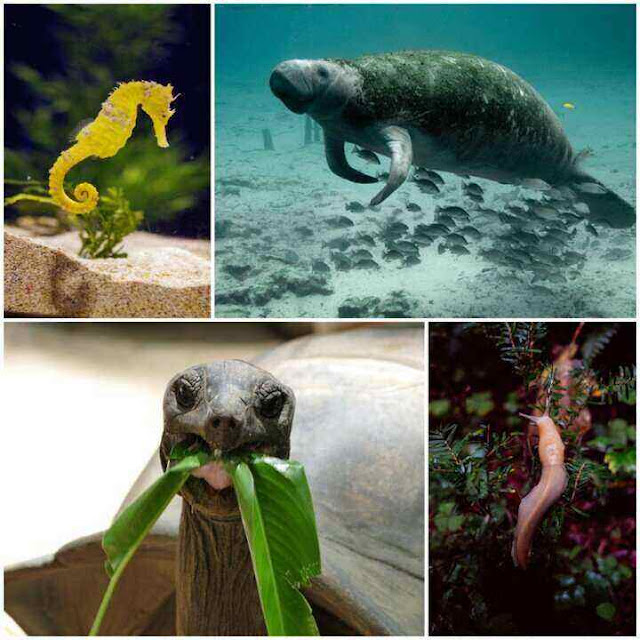
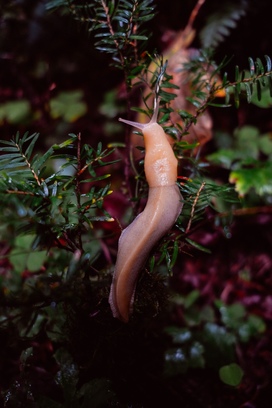



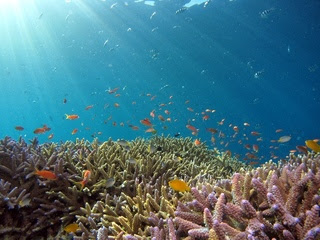
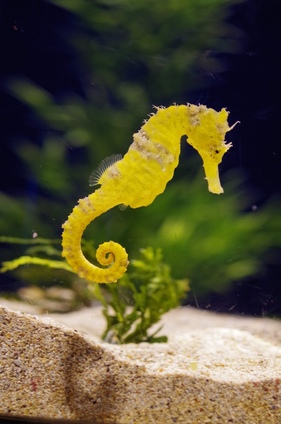




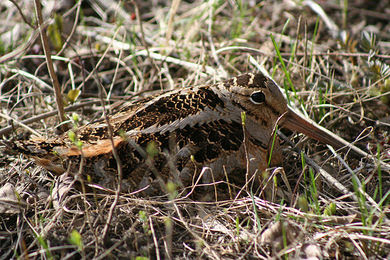

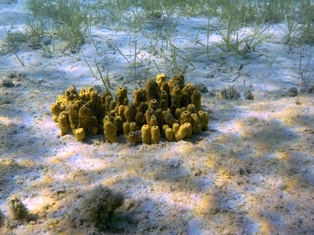
Post a Comment